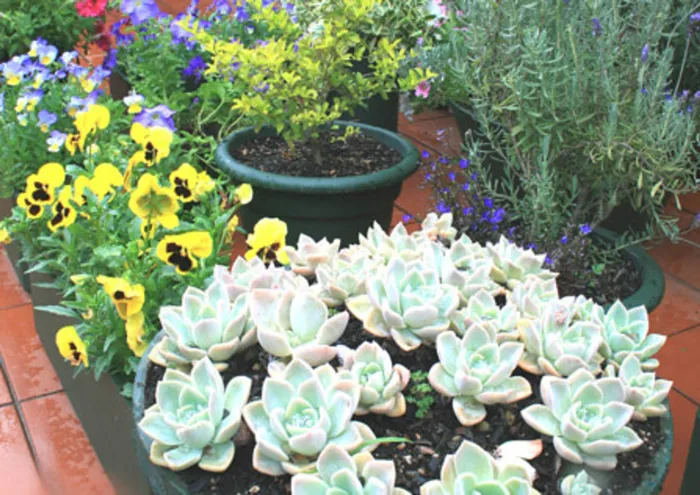Time to stock up on gardening equipment

If you have a collection of mismatched containers, group them together. A collection of pots makes much greater impact than individual pots. Picture: Lukas Otto If you have a collection of mismatched containers, group them together. A collection of pots makes much greater impact than individual pots. Picture: Lukas Otto
“Garden: one of a vast number of free outdoor restaurants operated by charity-minded amateurs in an effort to provide healthful, balanced meals for insects, birds and animals.”
Beard and McKie’s Gardener’s Dictionary
Most gardeners will have prepared for the busy holiday season by fertilising, tidying up the garden, planting window boxes and troughs with colourful summer annuals and laying down thick mulches to retain soil moisture and protect roots from overheating.
Only light, pleasant tasks remain, like dead-heading (to increase flower production) and watering.
Both should be carried out in the cool of early mornings and evenings.
Remember, watering regulations are still in force and that it is much better to give a deep drenching two or three times a week – which will reach down to the roots, for which it is intended – than a daily light drizzle which merely wets the soil surface and evaporates.
There are exceptions, however, such as azaleas and fuchsias, which benefit from more frequent, cooling, misty sprays on hot days.
With the new year here, and with holiday money in hand, it is wise to lay in a stock of good quality, essential gardening equipment – strong, sharp secateurs, for instance, with perhaps a lighter, smaller pair for dead-heading and flower-picking.
Try to buy any small implements such as these, with bright red handles, otherwise they are easily mislaid among the greenery.
For years I have searched for the ideal pair of gardening gloves, and at long last have found just the thing.
Made in China, these nitrile or Dura-lite gloves fit like a second skin, are machine-washable and don’t quickly develop holes at the fingertips.
To my surprise, they are also remarkably cheap.
Not essential perhaps, but wonderfully therapeutic for nature-loving gardeners, are bird feeders – that is, seed and/or sugar water dispensers.
We have had flocks of tiny waxbills coming for seeds and our resident Cape robins joining us for grated cheese whenever we eat on our balcony.
But our greatest delight has been a recently set up sugar water dispenser.
First discovered by white eyes in ever-increasing numbers, it next attracted sunbirds, dainty lesser double-collared sunbirds, and the bigger, long-tailed, iridescent Malachites, at all stages of growth – from fledglings with glimmerings of future glory to brilliant, fully developed males.
Finally, the sugarbirds arrived. More and more of them came, until the hibiscus above was weighed down with waiting queues of nectar lovers.
Watching the interaction among garden birds is a marvellously relaxing hobby.
From our balcony this morning, we were amazed to see a speckled baby robin, full of unexpected bravado, imitating the bullying pin-tailed whydah.
The whydah had terrorised all lesser birds for weeks by swooping down and chasing away would-be visitors to our bird restaurants.
The robin even alarmed the whydah itself, much to our amusement. - Cape Argus